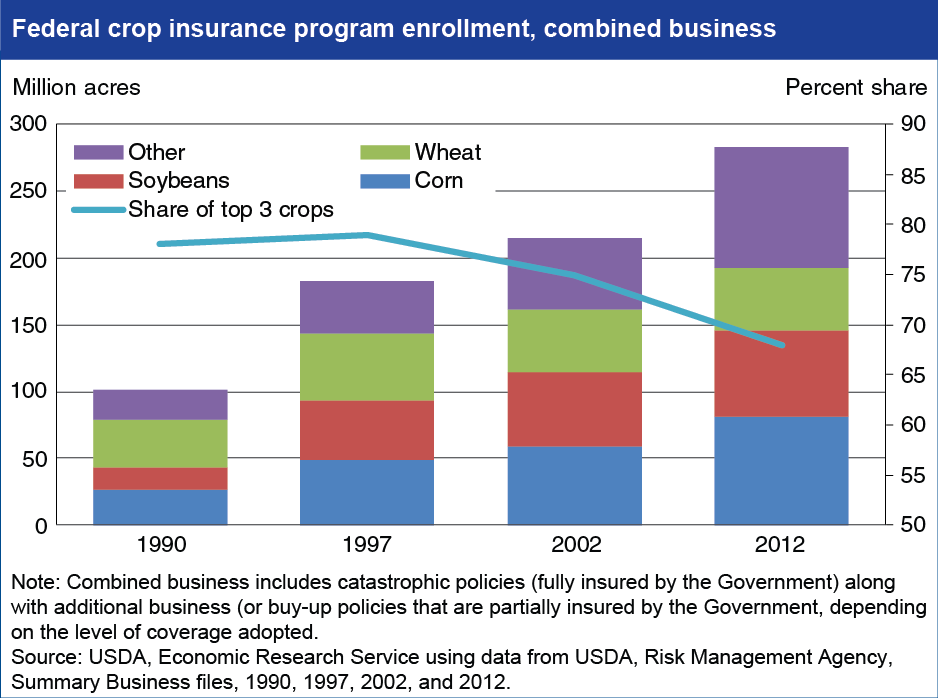Coverage of Federal crop insurance programs is expanding
- by Erik O'Donoghue
- 7/10/2014

Producers of corn, soybeans, and wheat—the three largest crops produced in the United States—are the largest consumers of Federal crop insurance, although producers of other crops are a growing share of program enrollment. In 1997, corn, soybeans, and wheat crops accounted for 80 percent of all acres enrolled in the program; including cotton and sorghum raised the share to nearly 90 percent of all acres enrolled. Over the last 15 years, with new types of policies being offered and more crops added to the program, the share of enrolled acres attributed to these major crops fell as participation in the Federal crop insurance program continued to rise. Pasture, forage and range land have accounted for the bulk of recent gains in enrolled acres, expanding from zero in 1997 to 48 million acres in 2012. By 2012, corn, soybeans, and wheat made up roughly 68 percent of all acres enrolled, with cotton and sorghum accounting for an additional 7 percent. The share of acres enrolled in crop insurance varies by crop and region, but these differences decreased between 1990 and 2012 as coverage rates increased. For more data and analysis, see The Effects of Premium Subsidies on Demand for Crop Insurance, released July 2014.

